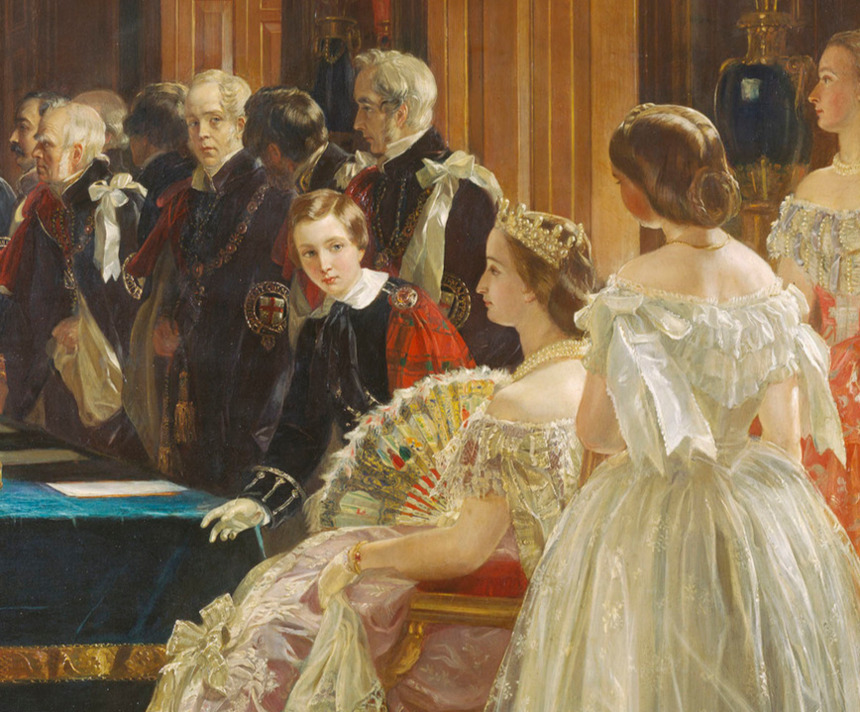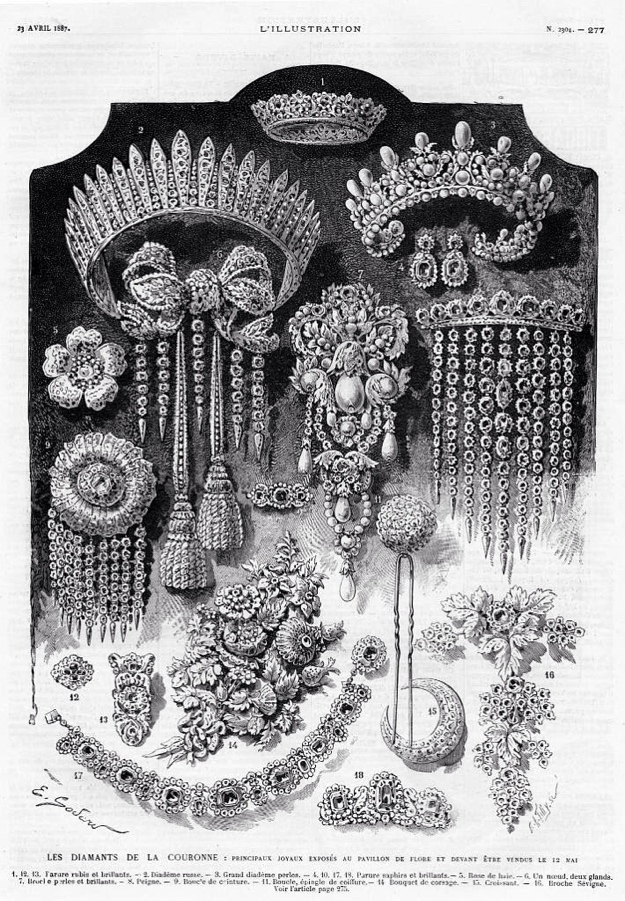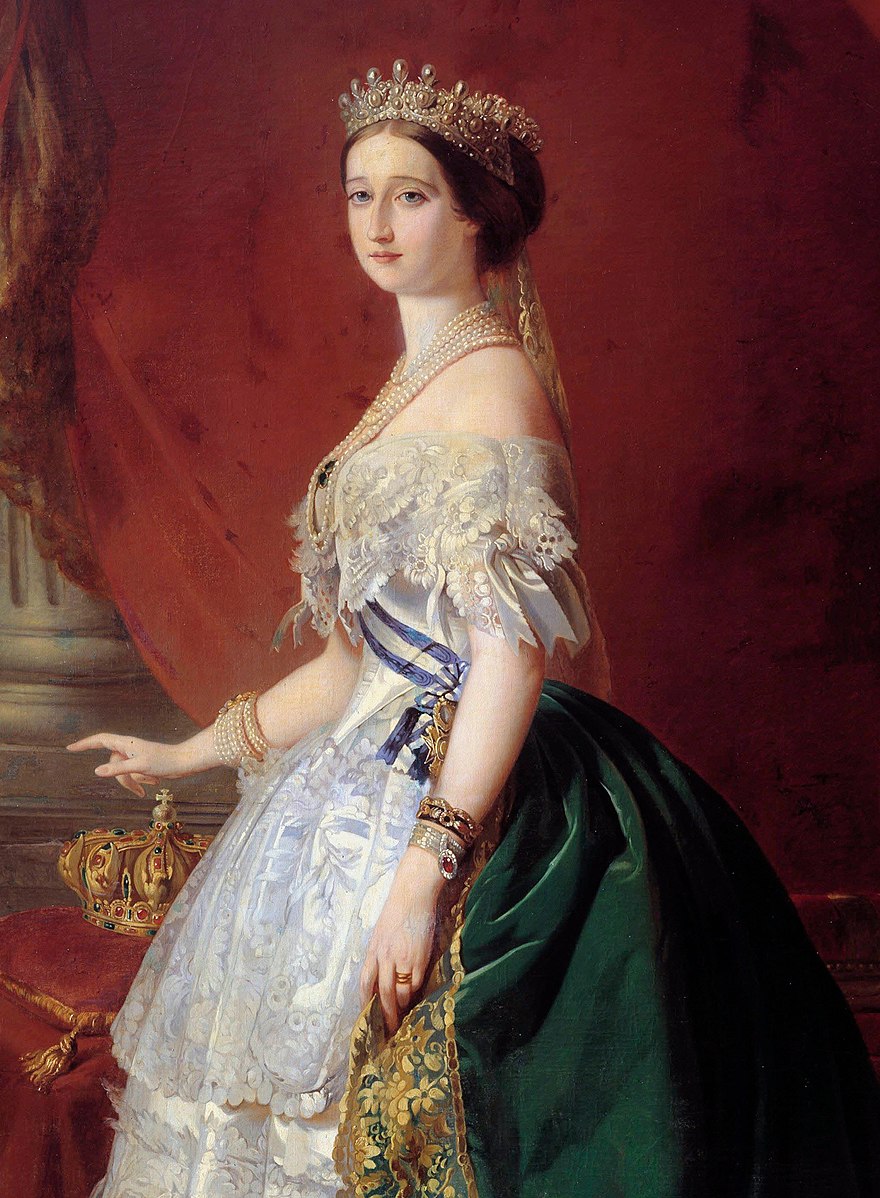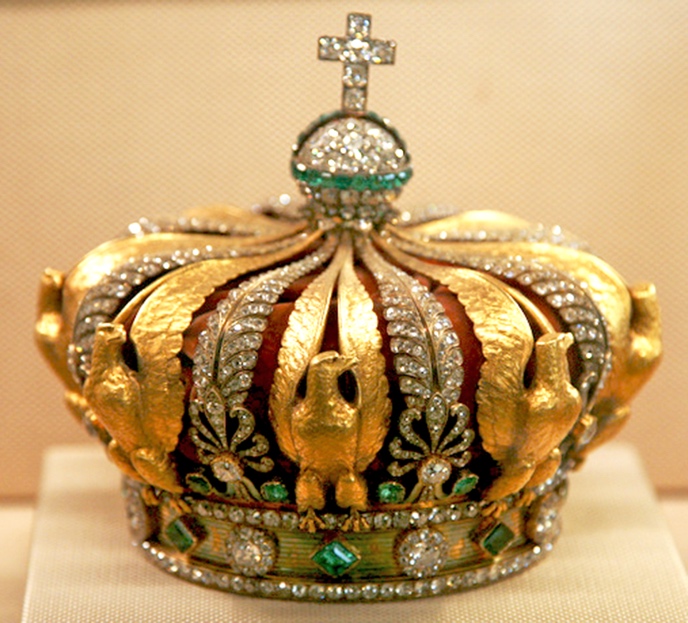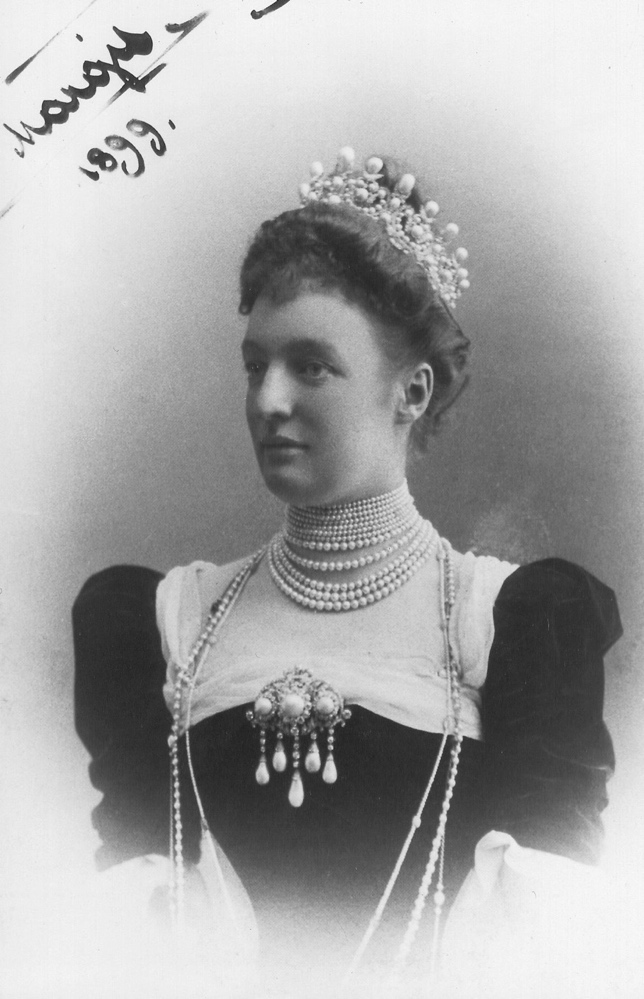The word sumptuous springs to mind when considering this splendid tiara with its luscious scrolls, volutes of diamonds and extraordinary pearls. It is difficult to imagine a jewel which illustrates the spirit and grandeur of mid-century Paris more perfectly.
Empress Eugénie wore the tiara frequently during her husband’s reign, and was often portrayed wearing it, including during a State Visit to England in 1855 where they met Queen Victoria at Windsor Castle, see image below.
However, the tiara formed part of the French Crown Jewels and was not Eugénie’s personal property. As a consequence, after the collapse of the French Second Empire and her exile to England it remained in France together with the rest of the Crown Jewels.

